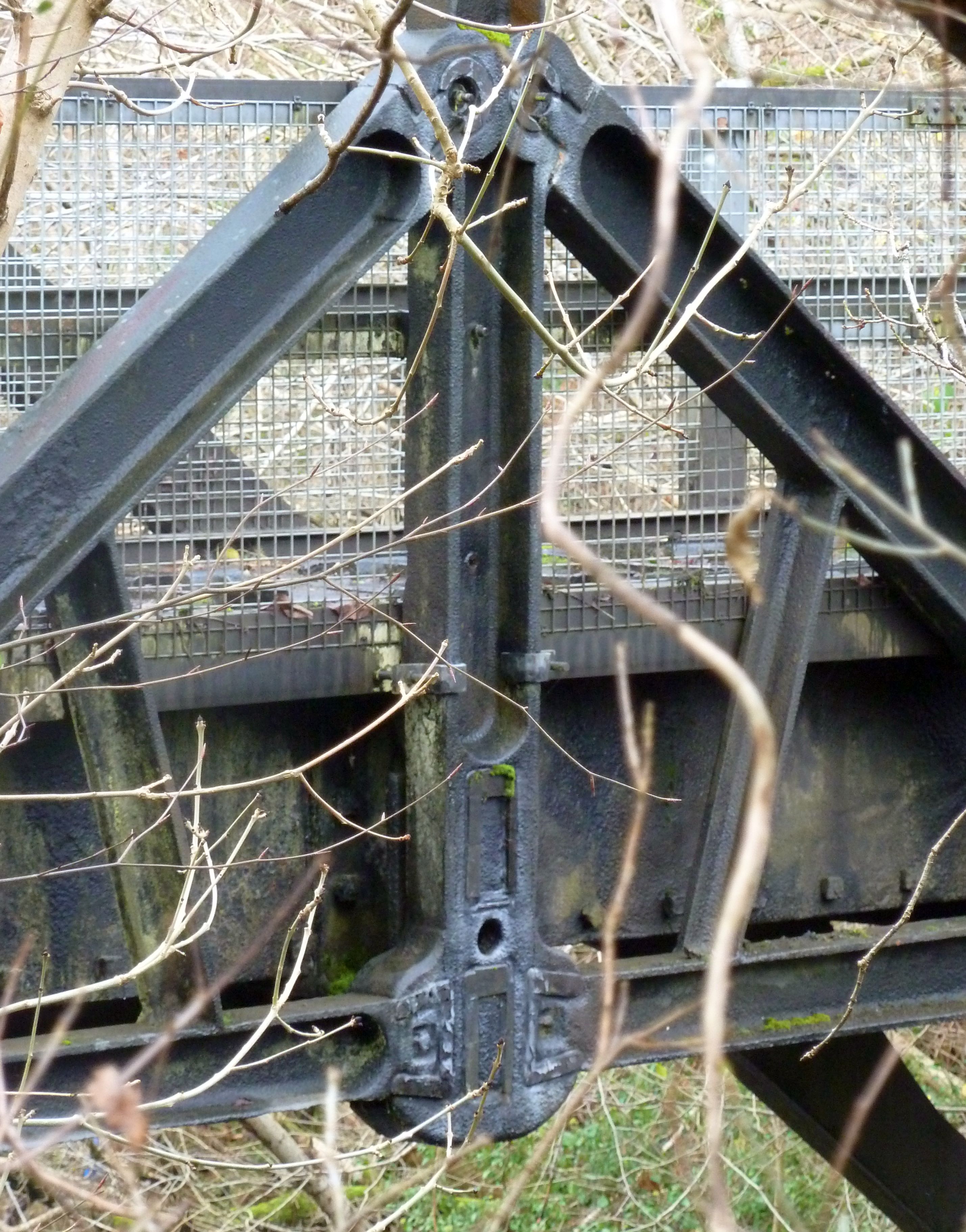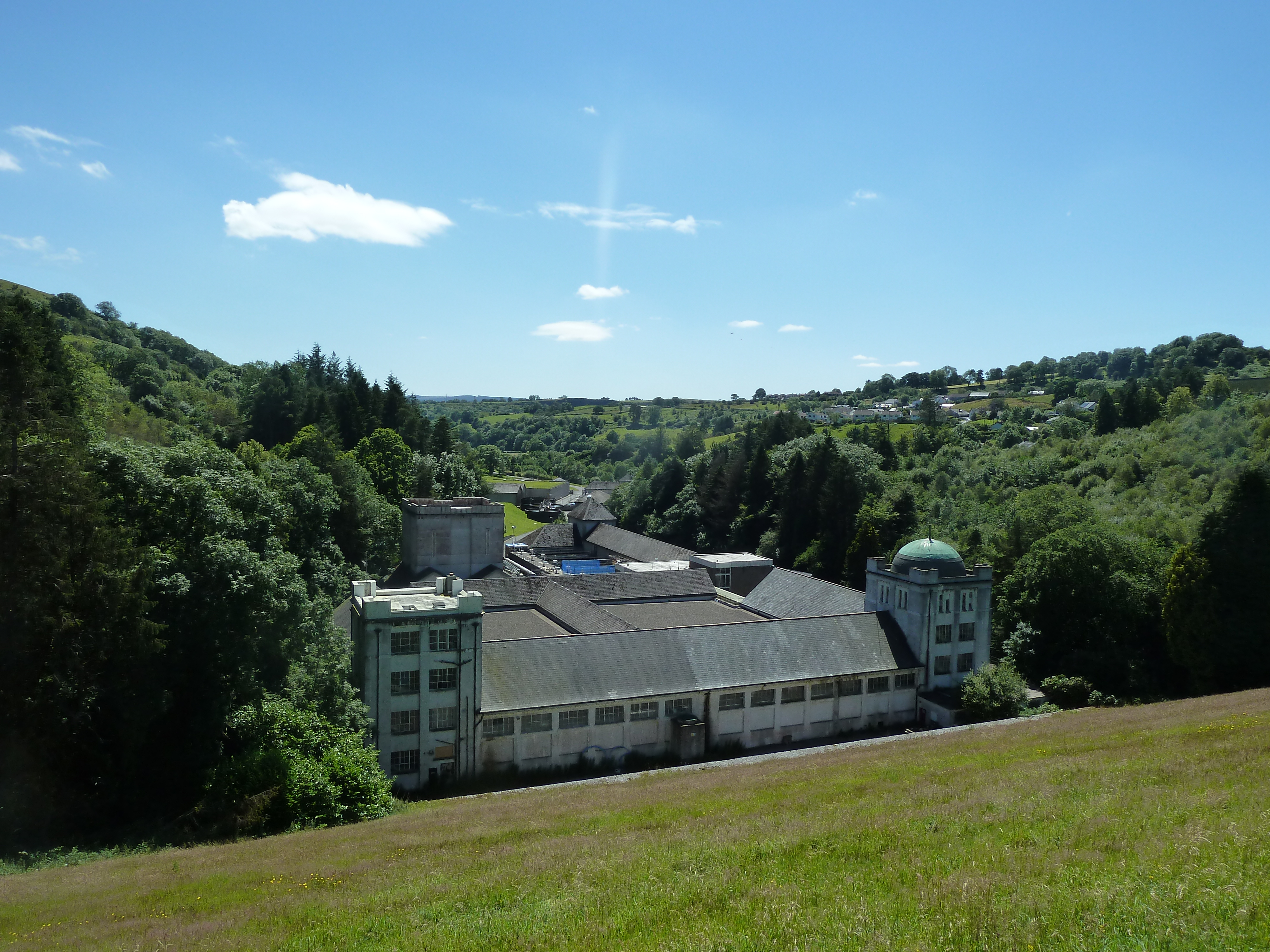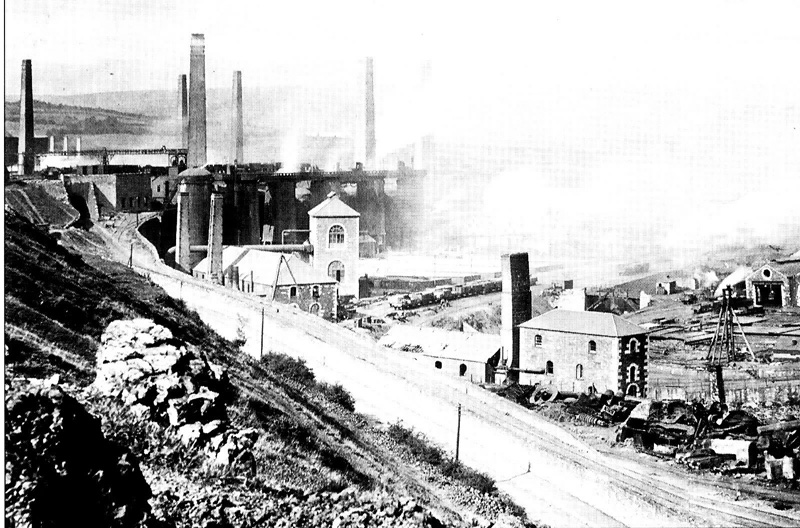|
Pont-y-Cafnau
The Pont-y-Cafnau (Welsh, meaning ''bridge of troughs''), sometimes written ''Pont y Cafnau'' or ''Pontycafnau'', is a long iron truss bridge over the River Taff in Merthyr Tydfil, Wales. The bridge was designed by Watkin George and built in 1793 for his employer, the Cyfarthfa Ironworks, to support both a tramway and an aqueduct to carry limestone and water into the works. A Grade II* listed building and Scheduled Ancient Monument, the Pont-y-Cafnau is the world's earliest surviving iron railway bridge. History The Cyfarthfa Ironworks were founded in 1765 and grew to the world's largest ironworks by the early 19th century. In 1771, the works obtained the right to quarry limestone from the Gurnos Quarry for use in the works' blast furnaces, and a gauge tramway was built between 1792 and 1793 to carry the limestone from the quarry into the plant. Pont-y-Cafnau is situated shortly downstream of the confluence of the Taff Fawr and the Taff Fechan to form the Taff. A weir ... [...More Info...] [...Related Items...] OR: [Wikipedia] [Google] [Baidu] |
Watkin George
Watkin George (1759-1822) was an carpenter, engineer and ironmaster from Trevethin in Monmouthshire. He rose from humble beginnings as a carpenter to have a major influence on ironworks at Cyfartha and Pontypool and is responsible for the design of early cast-iron bridges. Early life Little is known about George's early life except that he was born in Trevethin around 1759 and that his father, who was also called Watkin George, died in 1787. Career Again, little is known about George's early career but from about 1790 to 1794 he was possibly working on iron girder bridges over the Glamorganshire Canal. He was made a partner in Cyfartha ironworks in 1792 by the owner Richard Crawshay. The works expanded over the next few years, developing Henry Cort's puddling process, to become the largest ironworks in the world by 1806. During this period Watkin George also constructed or designed Pont-y-Cafnau (1792-93 - an iron tramway bridge and aqueduct), Gwynne water aqueduct (1793- ... [...More Info...] [...Related Items...] OR: [Wikipedia] [Google] [Baidu] |
River Taff
The River Taff ( cy, Afon Taf) is a river in Wales. It rises as two rivers in the Brecon Beacons; the Taf Fechan (''little Taff'') and the Taf Fawr (''great Taff'') before becoming one just north of Merthyr Tydfil. Its confluence with the River Severn estuary is in Cardiff. The river supports several species of migratory fish, including salmon, sewin (sea trout), and eel. Course From its confluence at Cefn-coed-y-cymmer, the river flows south, passing several towns. It picks up a few tributaries, such as the River Cynon, River Rhondda, Bargoed Taf and Nant Clydach. It flows through Pontypridd and through to Taff's Well, the site of Wales' only thermal spring. It flows underneath the M4 Motorway, before turning southeastward and flowing past the Cardiff suburbs of Radyr, Whitchurch, Llandaff, Pontcanna, the city centre and Grangetown, before emptying into Cardiff Bay, near to the mouth of the River Ely. Taf Fawr The Taf Fawr rises below the peak of Corn Du, ... [...More Info...] [...Related Items...] OR: [Wikipedia] [Google] [Baidu] |
King Post
A king post (or king-post or kingpost) is a central vertical post used in architectural or bridge designs, working in tension to support a beam below from a truss apex above (whereas a crown post, though visually similar, supports items above from the beam below). In aircraft design a strut called a king post acts in compression, similarly to an architectural crown post. Usage in mechanical plant and marine engineering differs again, as noted below. Architecture A king post extends vertically from a crossbeam (the tie beam) to the apex of a triangular truss. The king post, itself in tension, connects the apex of the truss with its base, holding up the tie beam (also in tension) at the base of the truss. The post can be replaced with an iron rod called a king rod (or king bolt) and thus a king rod truss. The king post truss is also called a "Latin truss". In traditional timber framing, a crown post looks similar to a king post, but it is very different structurally: wh ... [...More Info...] [...Related Items...] OR: [Wikipedia] [Google] [Baidu] |
Cyfarthfa Ironworks
The Cyfarthfa Ironworks were major 18th- and 19th-century ironworks in Cyfarthfa, on the north-western edge of Merthyr Tydfil, in South West Wales. The beginning The Cyfarthfa works were begun in 1765 by Anthony Bacon (by then a merchant in London), who in that year with William Brownrigg, a fellow native of Whitehaven, Cumberland, leased the right to mine in a tract of land on the west side of the river Taff at Merthyr Tydfil. They employed Brownrigg's brother-in-law Charles Wood to build a forge there, to use the potting and stamping process, for which he and his brother had a patent. This was powered by water from the river, the race dividing into six to power a clay mill (for making the pots), two stampers, two helve hammers and a chafery. The construction of the first coke blast furnace began in August 1766. This was intended to be 50 feet high with cast iron blowing cylinders, rather than the traditional bellows. It was probably brought into blast in autumn ... [...More Info...] [...Related Items...] OR: [Wikipedia] [Google] [Baidu] |
King Post
A king post (or king-post or kingpost) is a central vertical post used in architectural or bridge designs, working in tension to support a beam below from a truss apex above (whereas a crown post, though visually similar, supports items above from the beam below). In aircraft design a strut called a king post acts in compression, similarly to an architectural crown post. Usage in mechanical plant and marine engineering differs again, as noted below. Architecture A king post extends vertically from a crossbeam (the tie beam) to the apex of a triangular truss. The king post, itself in tension, connects the apex of the truss with its base, holding up the tie beam (also in tension) at the base of the truss. The post can be replaced with an iron rod called a king rod (or king bolt) and thus a king rod truss. The king post truss is also called a "Latin truss". In traditional timber framing, a crown post looks similar to a king post, but it is very different structurally: wh ... [...More Info...] [...Related Items...] OR: [Wikipedia] [Google] [Baidu] |
Dovetail
A dovetail joint or simply dovetail is a joinery technique most commonly used in woodworking joinery (carpentry), including furniture, cabinets, log buildings, and traditional timber framing. Noted for its resistance to being pulled apart (tensile strength), the dovetail joint is commonly used to join the sides of a drawer to the front. A series of 'pins' cut to extend from the end of one board interlock with a series of 'tails' cut into the end of another board. The pins and tails have a trapezoidal shape. Once glued, a wooden dovetail joint requires no mechanical fasteners. History The dovetail joint technique probably pre-dates written history. Some of the earliest known examples of the dovetail joint are in ancient Egyptian furniture entombed with mummies dating from First Dynasty, the tombs of Chinese emperors, and a stone pillar at the Vazhappally Maha Siva Temple in India. The dovetail design is an important method of distinguishing various periods of furniture. The e ... [...More Info...] [...Related Items...] OR: [Wikipedia] [Google] [Baidu] |
Railroad Tie
A railroad tie, crosstie (American English), railway tie (Canadian English) or railway sleeper (Australian English, Australian and British English) is a rectangular support for the Track (rail transport), rails in railroad tracks. Generally laid perpendicular to the rails, ties transfer loads to the track ballast and subgrade, hold the rails upright and keep them spaced to the correct rail gauge, gauge. Railroad ties are traditionally made of wood, but prestressed concrete is now also widely used, especially in Europe and Asia. Steel ties are common on secondary lines in the UK; Composite lumber, plastic composite ties are also employed, although far less than wood or concrete. As of January 2008, the approximate market share in North America for traditional and wood ties was 91.5%, the remainder being concrete, steel, Lophira alata, azobé (red ironwood) and plastic composite. Tie spacing may depend on the type of tie, traffic loads and other requirements, for example 2640 co ... [...More Info...] [...Related Items...] OR: [Wikipedia] [Google] [Baidu] |
Mortise And Tenon
A mortise and tenon (occasionally mortice and tenon) joint connects two pieces of wood or other material. Woodworkers around the world have used it for thousands of years to join pieces of wood, mainly when the adjoining pieces connect at right angles. Mortise and tenon joints are strong and stable joints that can be used in many projects. They furnish a strong outcome and connect by either gluing or locking into place. The mortise and tenon joint also gives an attractive look. One drawback to this joint is the difficulty in making it because of the precise measuring and tight cutting required. In its most basic form, a mortise and tenon joint is both simple and strong. There are many variations of this type of joint, and the basic mortise and tenon has two components: #the mortise hole, and #the tenon tongue. The tenon, formed on the end of a member generally referred to as a rail, fits into a square or rectangular hole cut into the other, corresponding member. The tenon is ... [...More Info...] [...Related Items...] OR: [Wikipedia] [Google] [Baidu] |
Weir
A weir or low head dam is a barrier across the width of a river that alters the flow characteristics of water and usually results in a change in the height of the river level. Weirs are also used to control the flow of water for outlets of lakes, ponds, and reservoirs. There are many weir designs, but commonly water flows freely over the top of the weir crest before cascading down to a lower level. Etymology There is no single definition as to what constitutes a weir and one English dictionary simply defines a weir as a small dam, likely originating from Middle English ''were'', Old English ''wer'', derivative of root of ''werian,'' meaning "to defend, dam". Function Commonly, weirs are used to prevent flooding, measure water discharge, and help render rivers more navigable by boat. In some locations, the terms dam and weir are synonymous, but normally there is a clear distinction made between the structures. Usually, a dam is designed specifically to impound water beh ... [...More Info...] [...Related Items...] OR: [Wikipedia] [Google] [Baidu] |
Trusses
A truss is an assembly of ''members'' such as beams, connected by ''nodes'', that creates a rigid structure. In engineering, a truss is a structure that "consists of two-force members only, where the members are organized so that the assemblage as a whole behaves as a single object". A "two-force member" is a structural component where force is applied to only two points. Although this rigorous definition allows the members to have any shape connected in any stable configuration, trusses typically comprise five or more triangular units constructed with straight members whose ends are connected at joints referred to as '' nodes''. In this typical context, external forces and reactions to those forces are considered to act only at the nodes and result in forces in the members that are either tensile or compressive. For straight members, moments (torques) are explicitly excluded because, and only because, all the joints in a truss are treated as revolutes, as is necessary f ... [...More Info...] [...Related Items...] OR: [Wikipedia] [Google] [Baidu] |







